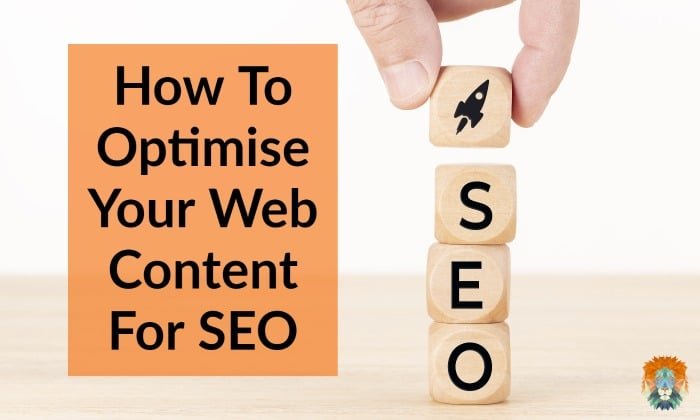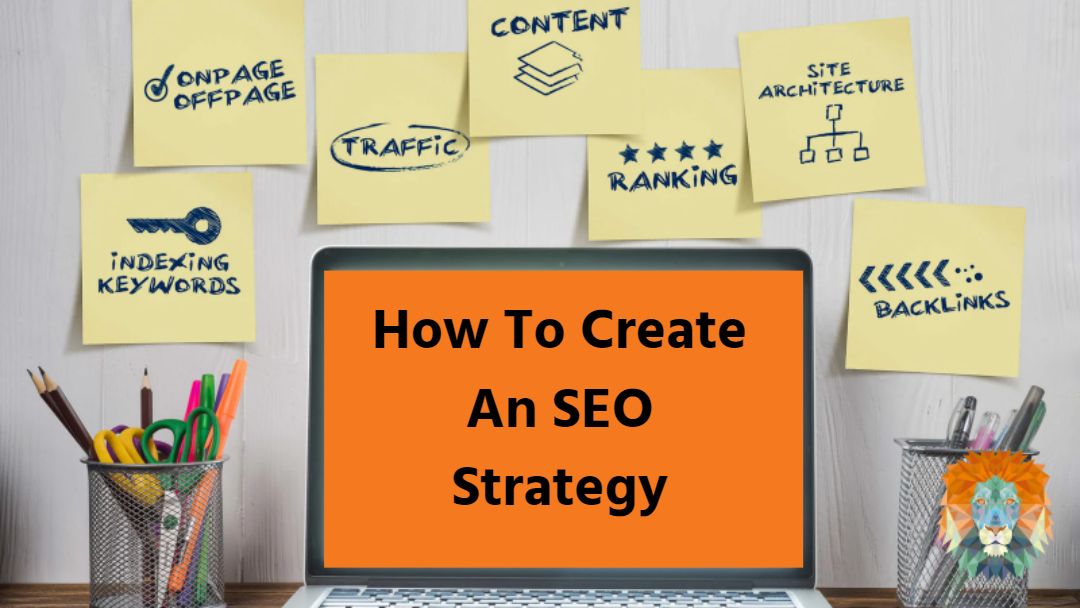When someone goes to google looking for the kind of things your business sells, you want to show up. Preferably at the top of the page! Luckily you’re not left to the whims of a search engine, and there is actually something you can do to improve your chances of appearing on page 1. It’s called SEO, or search engine optimisation, and it’s how you can increase the quantity and quality of traffic going to your website. There’s a lot that goes into SEO, but today we wanted to talk about how you can optimise your web content for SEO in 2022.
On-Page Optimisation
The main on-page optimisation of your website generally includes 3 elements:
- Link building
- Keywords
- Metadata
We’re going to go into more detail on keywords and metadata later, so for now let’s focus on link building. Links are just one of the things Google looks at when it’s deciding where to rank your website, and it looks at both quality and quantity. Any link from one page to another passes some of its PageRank to the page it’s linking to, giving the receiving page a boost. There are generally 4 types of links you can use on your website, each formatted or operating a little differently:
Anchor text links
Appear as highlighted and underlined text within your web copy. This text can be clicked on, and will take the user to the desired page. These can be useful if you’re trying to increase your ranking for specific keywords, but if you use them too much then they can actually do your rankings harm.
Naked URLs
When you can see the full URL displayed as text. Not hugely common and not as good as anchor text links for SEO.
Image links
Links that are included in the alt tags of images to help navigate either the website they’re on or link out to a relevant website.
Reciprocal links
Two businesses agree to provide links to each other’s websites within their own. These can be incredibly helpful if they both target the same market or offer complementary services, but if done randomly it can be harmful.
NoFollow links
These are links that have an extra instruction in their code that essentially tells Google to ignore it. This means Google doesn’t see the link and it won’t count towards your search ranking.
In general, you want to have a good mix of internal links (links to other pages on your own site), and external links to sites that are relevant, or have more authority. Building up these links can take time, but the more you include the better your ranking score will get.
Keywords
Keywords are an absolute cornerstone of good content and are essential if you want your content to show up in search engines. Keyword research is the process of finding and analysing actual search terms that people use on a day to day basis. In other words – it’s finding out what people are actually typing into Google to find services like yours. Many business owners think they have a good idea of what those words and phrases are without much research, and are almost always surprised by how different the results actually are. By doing this small amount of research, you can hone your content and tweak your website to draw more and more visitors, and hopefully convert them into customers. Doing keyword research includes:
- Listing topics and words that are relevant to your business
- Research related search terms using Google
- Check for a mix of long-tail keywords (phrases containing 3 or more words)
- Check your competitors
- Use a keyword planner to cut it down to the winners
Local SEO
Local SEO is all about getting yourself found in your local community – or at least around each of your locations. It’s incredibly important for any business with bricks and mortar presence, as it’s what allows you to show up on Google maps and in searches for people in your local area. This is largely done using keywords and locally relevant phrases (also known as geo-specific) to make sure your content shows up in mainly those searches. Ensuring you have these terms included in your web copy, articles and metadata can go a long way to getting you found locally and increasing footfall.
Going Mobile
If your website isn’t mobile-friendly yet, then you have a lot to answer for. Websites have had the ability to be ‘responsive’ (or mobile-friendly) since 2004, and Google has used mobile-friendly as an SEO rank factor since 2015. Being mobile-friendly is the most effective way to keep visitors on your website for longer since it will be easier and more attractive for them to use. This improves your bounce rate and means your SEO score will go up. For any modern website, responsive, mobile-friendly design is a must.
Metadata
‘Metadata’ might sound complicated, but really it’s just the term for the invisible tags on your website that tell search engines what you’re all about. It’s essentially signposting, making it easier for search engines to work out what your content is about and recommend it to the right people – which is what you’re trying to do with SEO! The main 3 types of metadata you should focus on for SEO are:
Title tags
This is one of the first things search engines notice, and it’s the title of your page You’ll be able to see what this is in your search results, as it displays as the title before your website name. It’s important to have at least one keyword in that title tag, as well as making sure the text is clear and engaging since it will be pulled out as the title for any social shares as well.
Meta descriptions
Underneath the title in search results is a little snippet of text, around 150-165 characters long, that gives a preview of what’s on the page/article. This snippet is called a meta description, and you should use it to give more information about your content in a concise way.
Image (alt) tags
Search engines also look at the images on your site when deciding your ranking, so you should use image tags where you can to let them know what the image is of. Not only is this good for search engines to tell them what the image represents, but it’s helpful for visually impaired users, as screenreaders use alt tags to describe images to them. You can use keywords in here if they make sense, but don’t overdo it.
Content
We’ve talked a lot before about content marketing and its value as part of the SEO process. But when we say high-quality, original content is the foundation of all your other SEO efforts, this is what we mean. In case you aren’t sure of the difference:
SEO
Focuses on the technical design and structure of a website. Involves a lot of the elements above including links, metadata and making the website user friendly, so that each web page can be found more easily for specific search terms.

Content Marketing
Is the publishing and sharing of useful content across not only your website, but also on social media, on your blog and anywhere else you have a presence. This content helps you to attract and retain your target audience, getting them to stay on your website for longer.
If you want your website to perform well on search engines, you need content marketing. If you want your content marketing to be found by more people and attract the right kind of customer, you need SEO. It’s incredibly difficult to achieve one without the other. One of the most effective ways businesses do this is by optimising their main web pages and then publishing regular, SEO friendly blogs of between 700-2,000 words to increase their site’s SEO power.
Keeping up
If there is one thing that Google is known for, it’s making changes. They are well known for being at the cutting edge of technology, mainly because of the huge volumes of data they collect every single second of the day. Google uses all of this new data to tweak and change their algorithms, which in turn affects your SEO efforts. Google makes around 9 changes to its algorithms per day, but most of these are small tweaks you probably wouldn’t notice. They also roll out major algorithmic changes fairly regularly, and this is what you really need to pay attention to. The last major update came in October 2019 in the form of BERT, and more changes are on the horizon. If you want to stay ahead of the competition, you need to keep an ear to the ground on what Google are doing, and be prepared to adjust your strategy to match it.
At Lion Spirit Media, we run a full SEO service alongside our content services, allowing you to make the most of your website and its content at every stage. We use a wide range of data and tools to design a bespoke SEO strategy for you, working through your pages and content to ensure they deliver the best results possible. If you would like to know more about SEO and what you can do to improve your rankings, just get in touch with the team today.





0 Comments